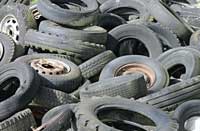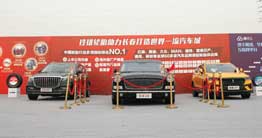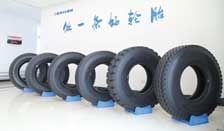China is beating the odds from rising scrap tyres and air-polluting recycling methods with advanced technologies, more recycling plants, and new company partnerships, says Angelica Buan in this report.
China leads in waste tyre output
Yearly, over 1.5 billion units of tyres are produced and 1 billion waste tyres are generated, but only 10% are recycled. Increasing the recycling of waste tyres translates to increasing investments into new technologies and expanding capacities.

China, the world’s largest tyre consumer and producer, accounting for 30% of the world’s tyre market, reportedly generated over 15 million tonnes of waste tyres in 2019, with waste tyres scrapping increasing from 8-10% per year according to the China Tyre Recycling Association (CTRA).
During the Covid-19 pandemic, China’s automobile market waned, and as a result the country’s tyre output is projected to dip by 15-25%, depending on the local and foreign market situation, according to a report from the China Rubber Industry Association (CRIA).

In 2019, CRIA estimates the total car tyre output was at 652 million and this year the overall tyre production is expected to drop by 15%.
Nevertheless, the market is expected to pick up over the next few years. According to a report by Research and Markets, vehicle ownership is projected to rise to over 380 million units by 2025, auguring demand for tyres.
Tyre production on a roll
Even with the Covid-19 restrictions still in effect, tyre businesses have started to rebound.
Zhaoyuan-headquartered Shandong Linglong Tire has recently launched its fifth manufacturing base in Changchun automotive economic zone, with a total investment of US$700 million and capacity of 12 million passenger and 2 million truck/ bus tyres/year and 200,000 truck/bus retreads/year when it reaches full completion. Its other four plants in China are in Zhaoyuan, Dezhou, Liuzhou, Jinmen; and it has two international ones in Thailand and Serbia.
Hubei Linglong in Jinmen, the fourth manufacturing plant, commenced only in late 2019. It is targeted to generate a capacity of 12 million passenger tyres/year; 2.4 million truck and bus tyres/year; and 60,000 offthe- road tyres/year.
Similarly, Hangzhou-headquartered Zhongce Rubber Group (ZC Rubber) has recently resumed full tyre production. ZC Rubber is one of the world’s largest tyre makers, with subsidiaries in Europe, the US, Brazil and Thailand.

Elsewhere, Sailun Group, early this year, inaugurated two projects: the Dongying factory for semi-steel radial tyres, a project that is listed in the 2020 Key Engineering Projects of Guangrao County, Shandong Province, with an investment of about
RMB1 billion. It also started construction on the Shenyang plant for all-steel load meridian tyres. With the completion of the project, the Shenyang plant will have a production capacity of 5 million tyres/year, making it one of the largest all-steel meridian tyre monolith factories in the world.
More tyres means more waste
The sector’s brisk activities anticipate furthering tyre production, and as a result would have increased the amount of end-of-life (ELT) tyres. In China, more than 300 million used tyres are not recycled, and the amount could reach 13 million/ year of ELTs, according to data from CRIA.
Now, the country is taking bold steps to raise recycling rates of rubber scraps, including drafting guidelines for the reuse and recycling of waste rubber tyres.
The Ministry of Industry and Information Technology, in 2011, developed the Opinions on the Guidance of Comprehensive Utilisation of Waste Tyres, the first industrial policy for the comprehensive utilisation of waste tyres specifically issued by the Chinese Government.
In 2012, the Conditions for the Access to Tyre Retreading Industry and the Conditions for the Access to Comprehensive Utilisation Industry of Waste Tyres were also issued.
Industrial policies provide the framework for the development of comprehensive utilisation of waste tyres, while encouraging tyre recycling by providing incentives to relevant enterprises, such as those engaged in retreading tyres or producing rubber powder from waste tyres.
Furthermore, China is boosting its tyre recycling business, by improving recycling technologies like thermal cracking, and increasing tyre retreading rates. The guideline also encourages the recycling of tyres into rubber powder.
Material recovery from ELTs can be carried out through various methods such as pyrolysis, devulcanisation, chemical recycling and various other modalities to obtain secondary materials such as rubber granules, carbon black, fuel, fibres, etc, for many industrial applications.
In addition, China has set up recycling initiatives such as utilising rubber asphalt for road applications and waste rubber-derived fuels for cement kilns.
